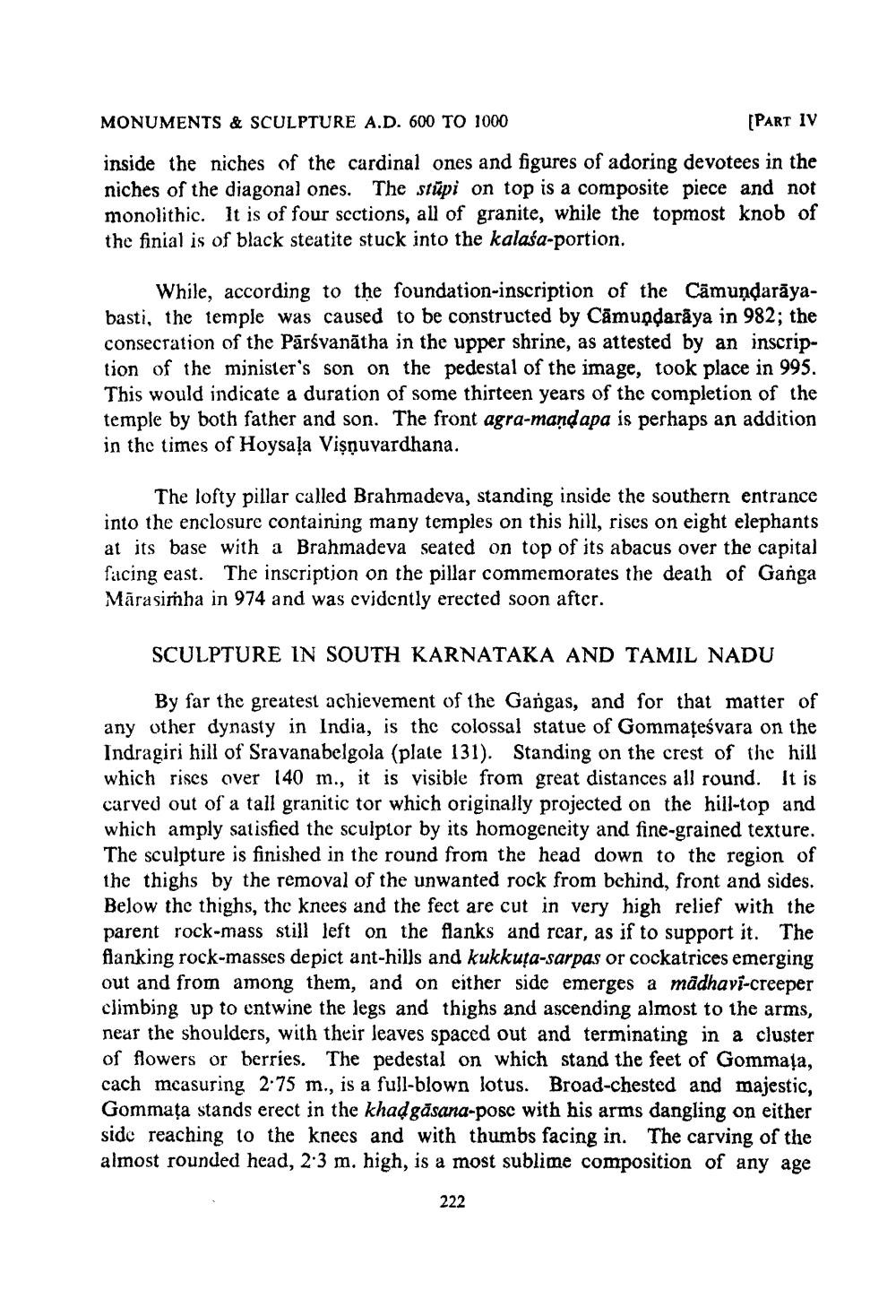________________
MONUMENTS & SCULPTURE A.D. 600 TO 1000
[PART IV inside the niches of the cardinal ones and figures of adoring devotees in the niches of the diagonal ones. The stupi on top is a composite piece and not monolithic. It is of four sections, all of granite, while the topmost knob of the finial is of black steatite stuck into the kalasa-portion.
While, according to the foundation-inscription of the Camuṇḍarāyabasti, the temple was caused to be constructed by Camuṇḍaraya in 982; the consecration of the Parsvanatha in the upper shrine, as attested by an inscription of the minister's son on the pedestal of the image, took place in 995. This would indicate a duration of some thirteen years of the completion of the temple by both father and son. The front agra-mandapa is perhaps an addition in the times of Hoysala Visnuvardhana.
The lofty pillar called Brahmadeva, standing inside the southern entrance into the enclosure containing many temples on this hill, rises on eight elephants at its base with a Brahmadeva seated on top of its abacus over the capital facing east. The inscription on the pillar commemorates the death of Ganga Mārasimha in 974 and was evidently erected soon after.
SCULPTURE IN SOUTH KARNATAKA AND TAMIL NADU
By far the greatest achievement of the Gangas, and for that matter of any other dynasty in India, is the colossal statue of Gommatesvara on the Indragiri hill of Sravanabelgola (plate 131). Standing on the crest of the hill which rises over 140 m., it is visible from great distances all round. It is carved out of a tall granitic tor which originally projected on the hill-top and which amply satisfied the sculptor by its homogeneity and fine-grained texture. The sculpture is finished in the round from the head down to the region of the thighs by the removal of the unwanted rock from behind, front and sides. Below the thighs, the knees and the fect are cut in very high relief with the parent rock-mass still left on the flanks and rear, as if to support it. The flanking rock-masses depict ant-hills and kukkuṭa-sarpas or cockatrices emerging out and from among them, and on either side emerges a madhavi-creeper climbing up to entwine the legs and thighs and ascending almost to the arms, near the shoulders, with their leaves spaced out and terminating in a cluster of flowers or berries. The pedestal on which stand the feet of Gommata, cach measuring 2.75 m., is a full-blown lotus. Broad-chested and majestic, Gommata stands erect in the khadgasana-pose with his arms dangling on either side reaching to the knees and with thumbs facing in. The carving of the almost rounded head, 2:3 m. high, is a most sublime composition of any age
222




